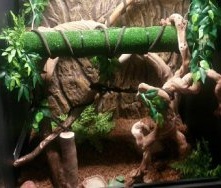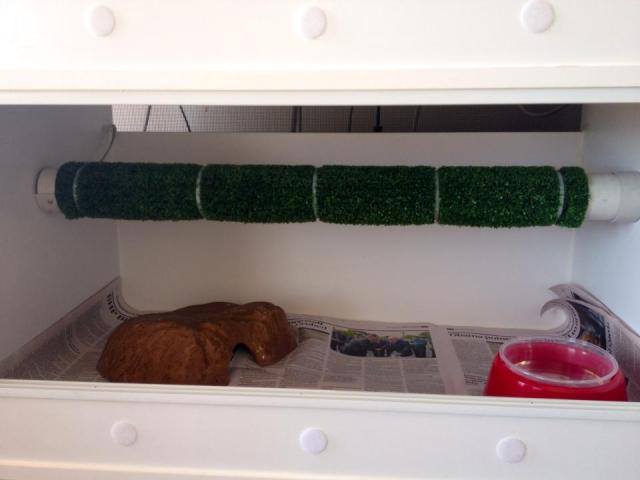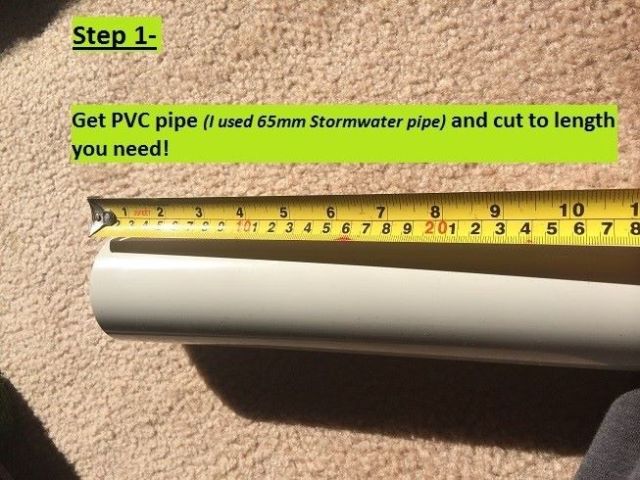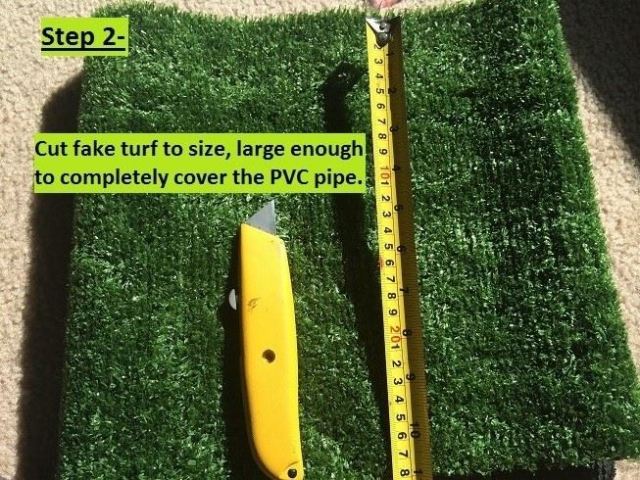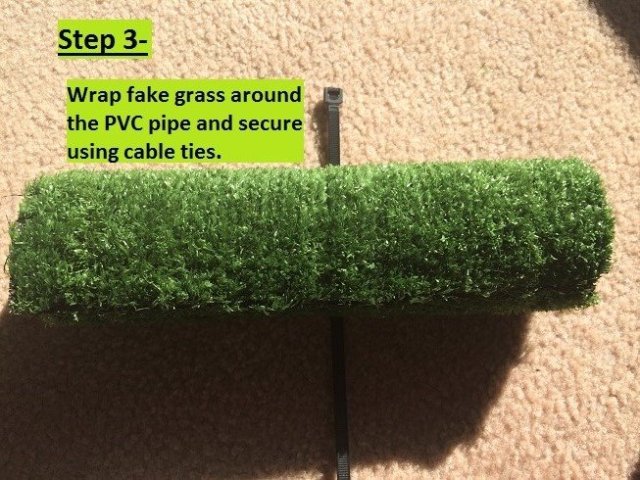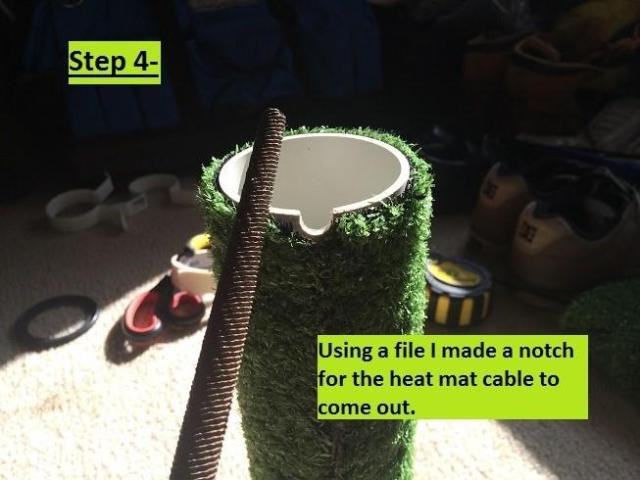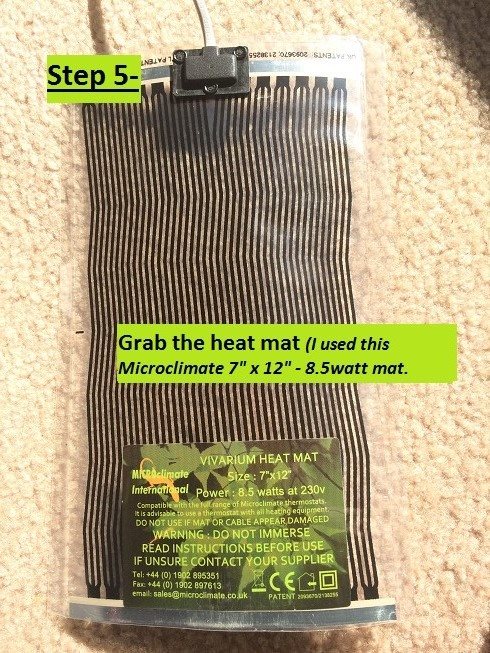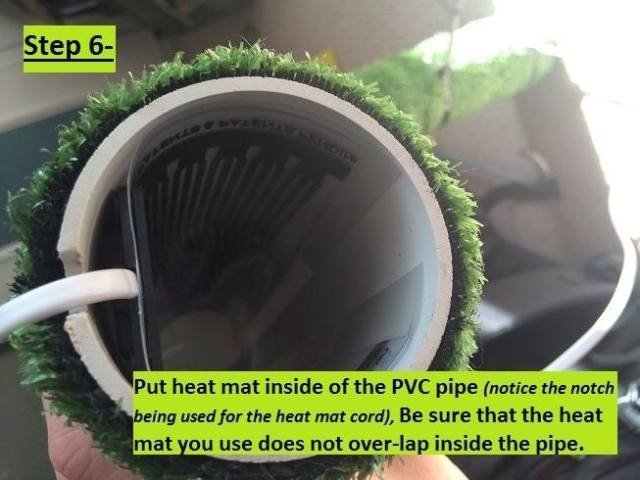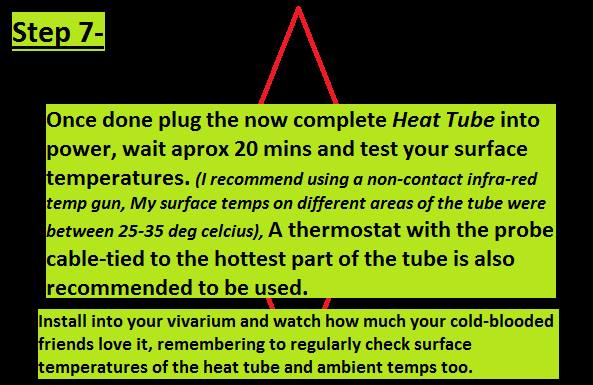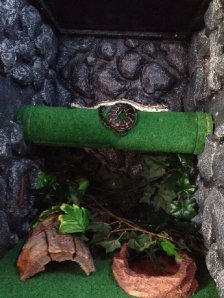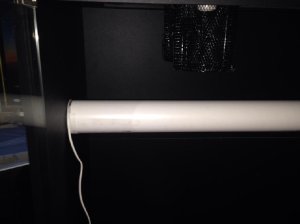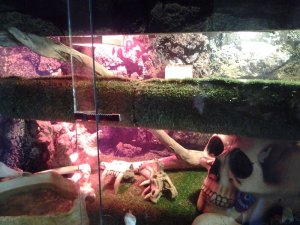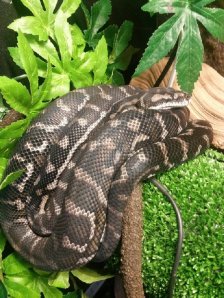Matt Harris is a well known python breeder in WA. A few years back he told us all about how he created heat pipes to use with his South West Carpet Pythons. Using only a mere 13W of electricity per enclosure.
Using an approximate cost of 25c per kilowatt we can see the difference of running a 13W vs 100w heat source. (Double it for 24 hours of heat)
The heat pipe consists of a length of PVC pipe and a *Microclimate heat mat (*only brand of heat mats we recommend using).
The idea is that the python lays on the warm pipe to gain access to heat.
There have been a few variations on the same theme as each person tends to add their own touch. But the idea is still essentially the same.
The pipe can be covered in fake grass to assist the python with grip. Left we see an example of the fake grass, with a vine also added to assist the python.
Smaller pythons do not like to be out in the open. So it is important to use fake leaves and vines (as coverage) to ensure small pythons feel safe and secure while still getting access to the warmth.
The heat pipe should also be the highest perch available in the enclosure. A higher perch will often result in the python not using the heat pipe as they would prefer to sit higher. This is especially true for juvenile carpet pythons.
We recommend the use of an infra-red thermometer gun or cable tying a probe thermometer to the warm part of the pipe to keep an eye on temperatures. You need to make sure that the pipe is warm enough, but not too hot. 36-38 degrees C is perfect for the heat pipe temperature. Checking with an infra red temperature gun is the best way to check your temperatures.
- 8w heat mat – use a 65mm pipe
- 13w heat mat – use a 100mm pipe
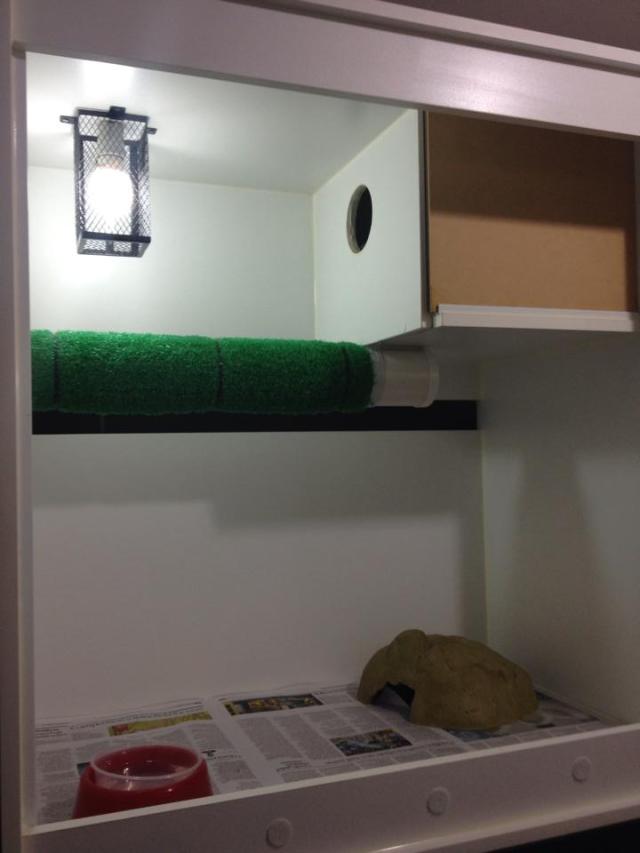
This is the perfect example of how it should be set up by Matt Harris. The pipe must be long enough to dissipate the heat and give a thermal gradient. It must also be the highest object for sitting on in the enclosure.
Bellow is a DIY example by WA python keeper Josh Summerfield.



